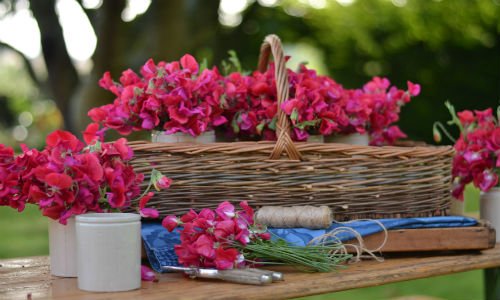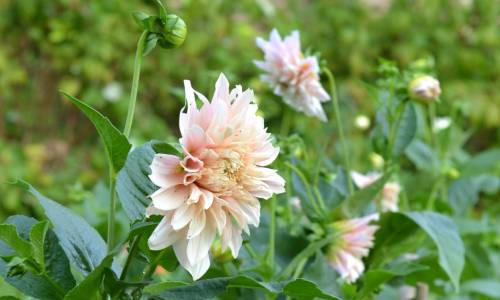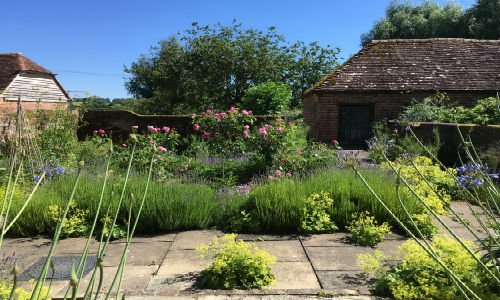The evenings are definitely drawing out and the mornings begin earlier. Make the most of the extended daylight to start sowing under cover in early March. This will give you an opportunity to raise your own plants from seed and the chance to create a cut flower patch in your garden, which will be all set to transplant just as soon as there is no more chance of frost.
Larkspur, Sweet peas, Ammi majus, Dianthus (Sweet Williams) are just a few of the many varieties that can all be germinated in a greenhouse or sunny window sill now.

Start preparing your dahlias.
If you haven’t already checked the tubers that have been stored over winter, it would be a good idea to check them over now. Remove any that haven’t survived and if possible gently tease some of the larger clumps apart. Plant in large pots of compost and label each variety. Place in a warm, sunny position in a greenhouse or conservatory and water occasionally and sparingly if the compost seems to be overly dry. Over generous watering at this stage, can cause the tubers to rot.
Take cuttings from new growth and then plant the established plants into a well mulched bed, after the risk of frost has passed in late May. Stake the plants or offer some form of support before needed, rather than trying to tie up plants that have been battered and bruised by the an unexpected spell of poor weather.

In the herb garden, there’s no time to delay with seeding…
Chervil –
Best for: A slight aniseed flavour that partners well with chicken, fish, vegetables and salad.
How to grow: Sow direct in to a well prepared seed bed or within individual modules undercover to be transplanted later on.
Chives –
Best for: Delicate onion flavour that is great with baked cheese dishes and creamy chicken or egg recipes. The purple flower heads can be gently separated to garnish salads.
How to grow: Sow direct in to a well prepared seed bed.
Coriander –
Best for: Distinct aroma and robust flavour that can hold its own alongside lemon grass, chilli and ginger. , this fresh green herb works well with any carrot dish too. Try fritters, raw salads, soups and savoury roulades too. We also love the fresh leaves added to hummus and kedgeree.
How to grow: Easily runs to seed. So successional sowing is best. Sow direct or in deep root trainers so there is no disturbance when transplanted.

In the borders..
The snowdrops have faded but to encourage more growth next year, we dig the clumps of bulbs in the green and gently separate. Transplant in to partially shaded areas around the garden to encourage more plants for next year.
Any remaining woody and tired stems from over wintering perennials can be cut back to ground level as the new growth starts to emerge.
Finally…
If you have an apple tree on your plot, early March is the last opportunity to prune before the new spring growth and blossoms appear.
